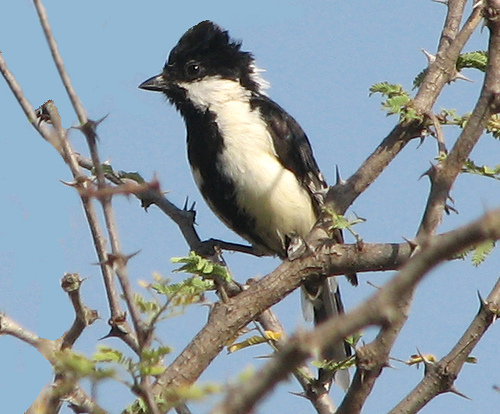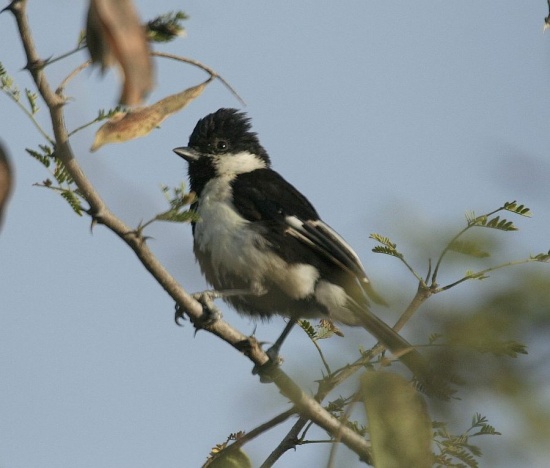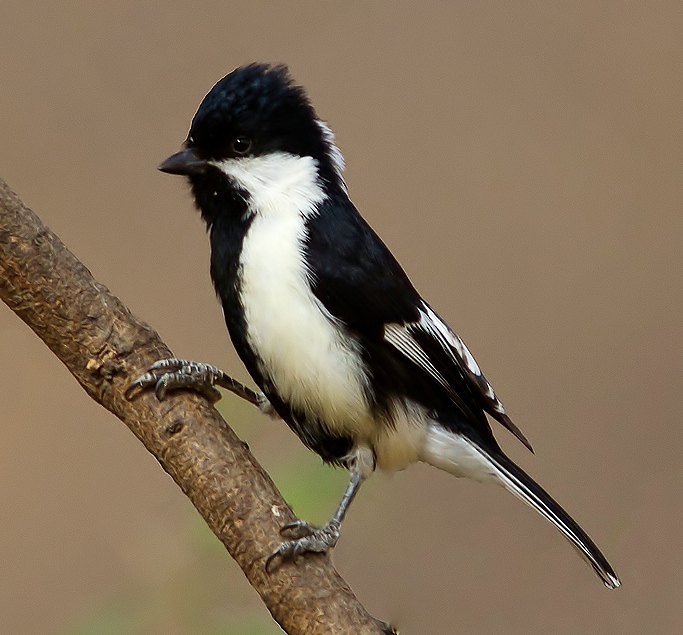
Parus nuchalis
SUBFAMILY
Parinae
TAXONOMY
Parus nuchalis Jerdon, 1845. Monotypic.
OTHER COMMON NAMES
English: White-winged tit, white-naped black tit, collared tit;
French: Mйsange а ailes blanches; German: Weissflьgelmeise;
Spanish: Carbonero de Nuca Blanca.
PHYSICAL CHARACTERISTICS
4.75 in (12 cm); 0.45–0.5 oz (13–14.5 g); contrasting patterns
of black and white throughout except for pale yellow underparts.
DISTRIBUTION
Endemic to India with small, fragmented populations in the
northwest and south of the country.
HABITAT
Occurs in lowland dry thorn-scrub forests in northwest India
up to 1,969 ft (600 m), as well as dry to moist deciduous woodlands
in south India. Also found in gardens, along stream-beds
and around irrigated croplands.
BEHAVIOR
Resident, but makes local movements. Little known about territoriality,
but will join mixed-species flocks. Song is a repeated
monosyllabic call, but a variety of other calls are made.
FEEDING ECOLOGY AND DIET
Forages throughout the canopy and shrub layer, with diet
comprising insects and spiders.
REPRODUCTIVE BIOLOGY
Poorly known. Nests in tree cavities, typically those made by
woodpeckers. Clutch size, incubation, and brooding
BEHAVIOR
not known. Timing of breeding is during the monsoons: May-
August.
CONSERVATION STATUS
Vulnerable. The population is highly fragmented and declining,
and is estimated to be 2,500–10,000 pairs. Most serious
threat is continued degradation, loss, and fragmentation of
thorn forest habitat.
SIGNIFICANCE TO HUMANS
None known.
Other popular Animals
Photo Gallery of - White-naped tit




 Animalia Life
Animalia Life